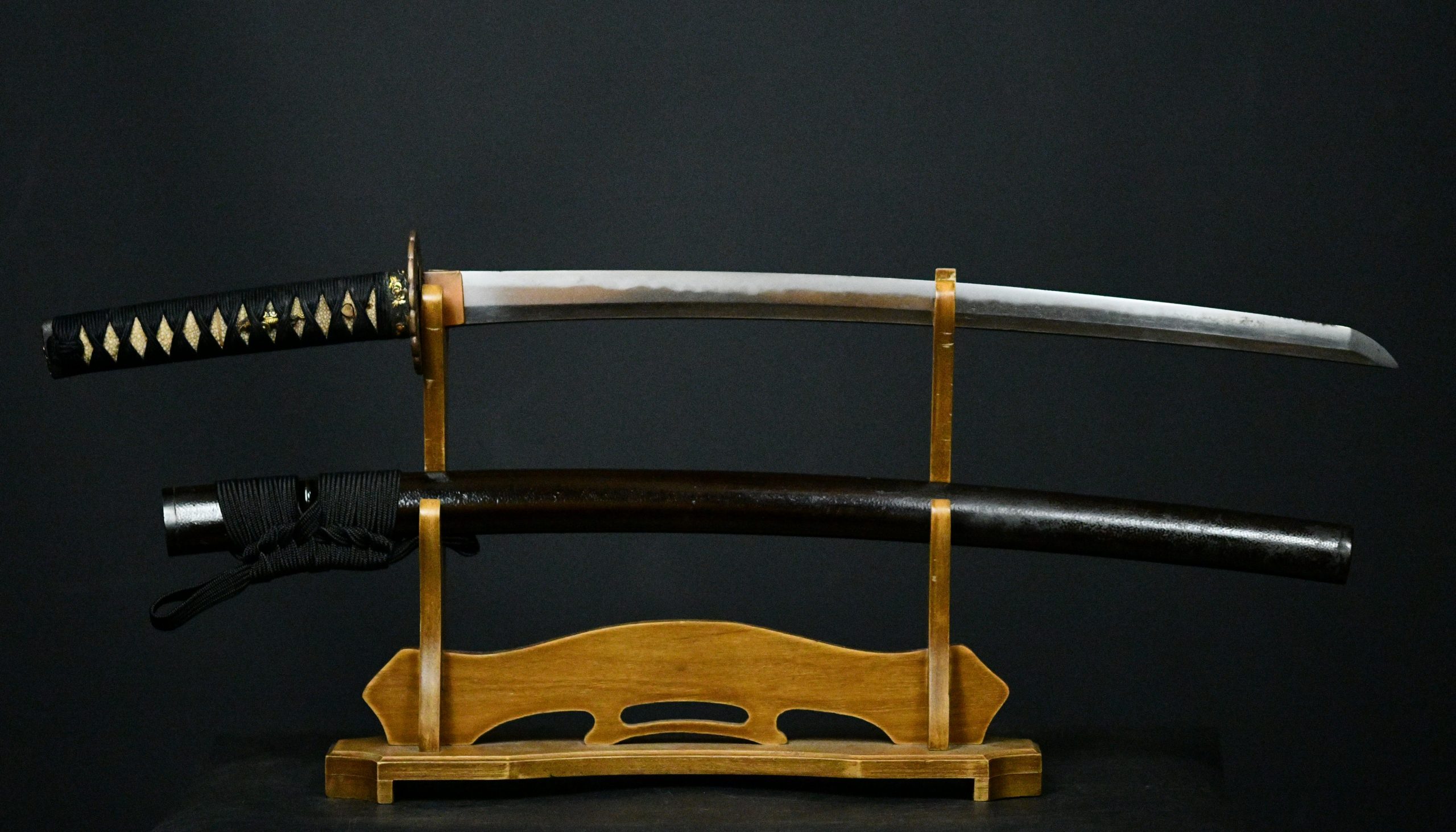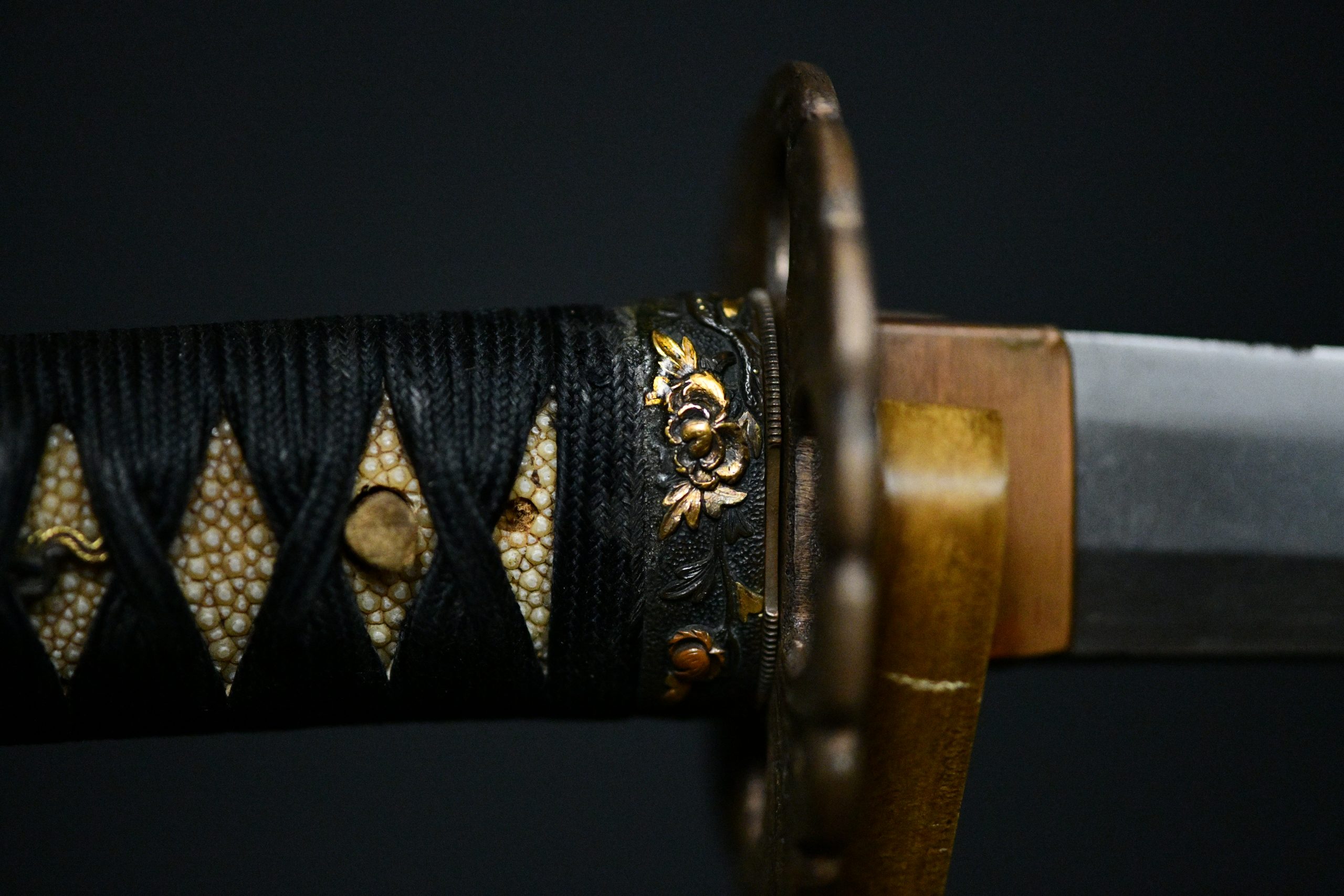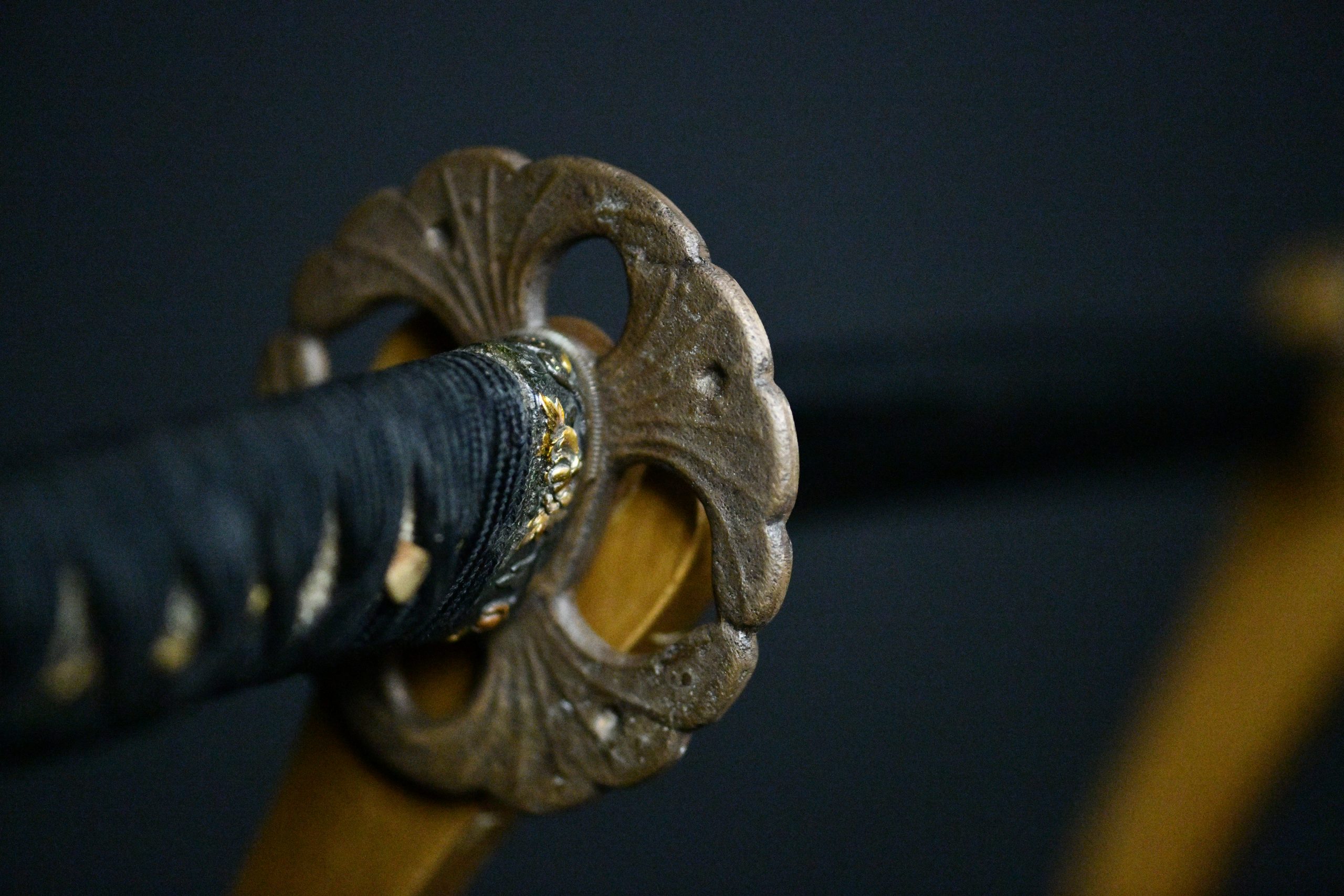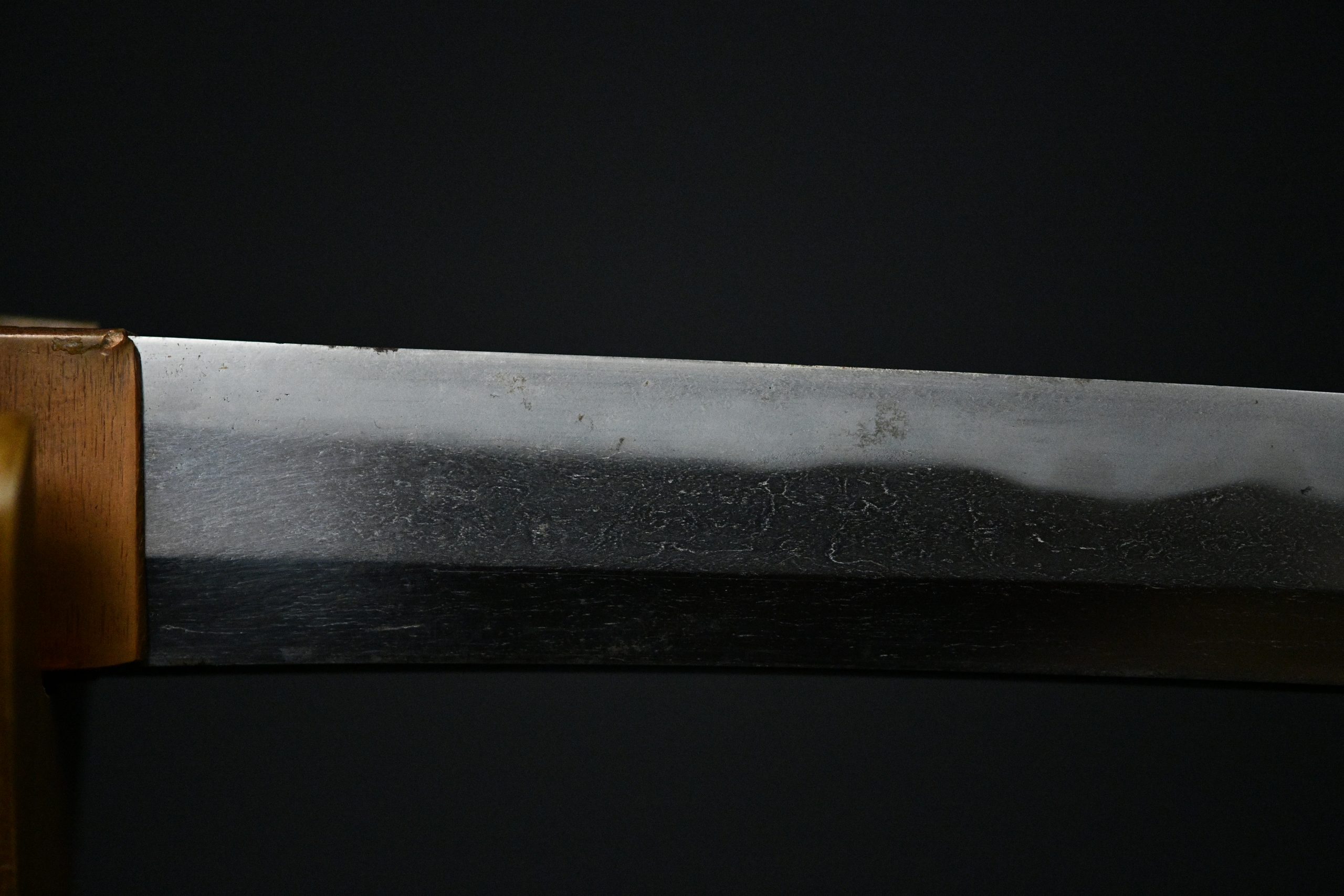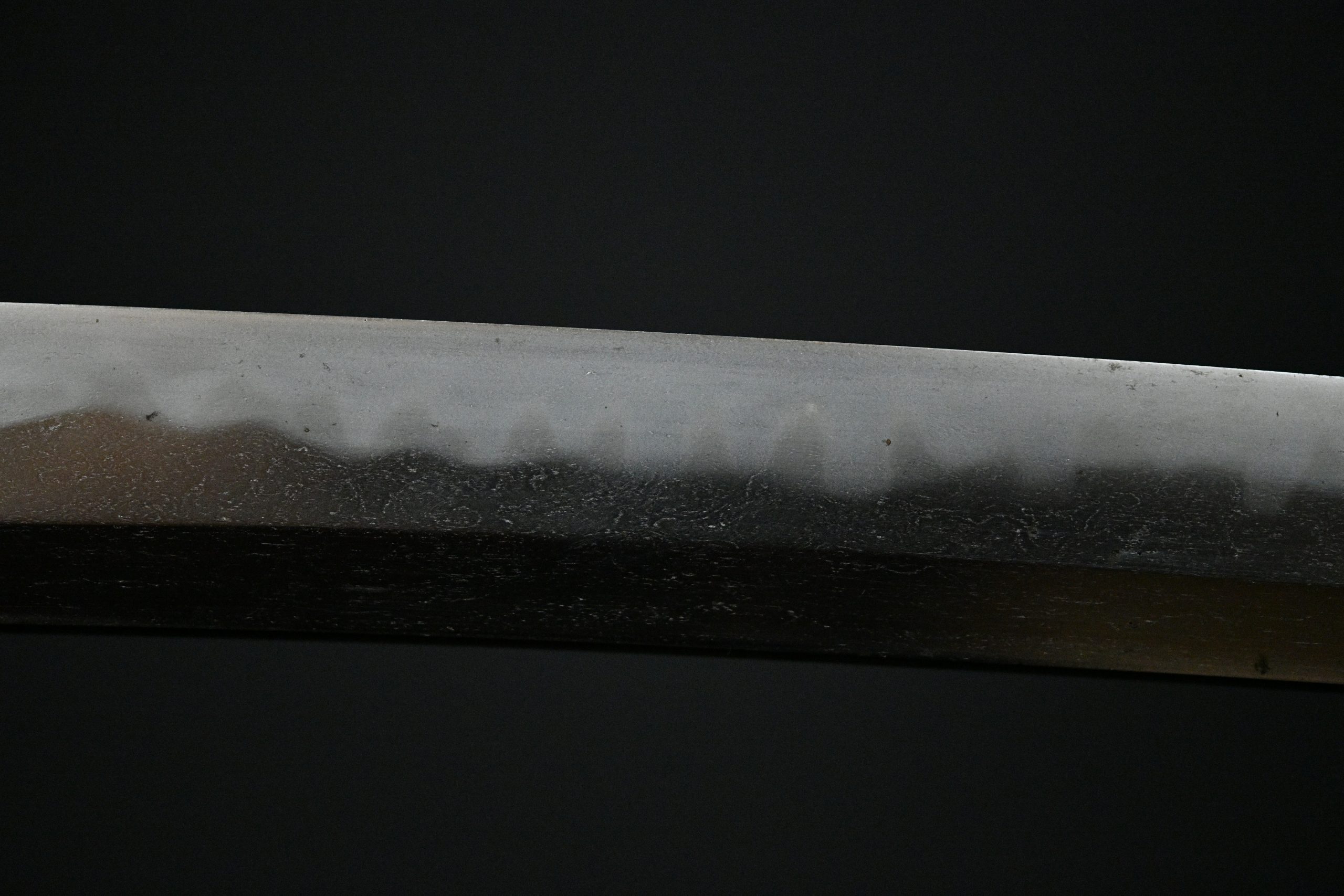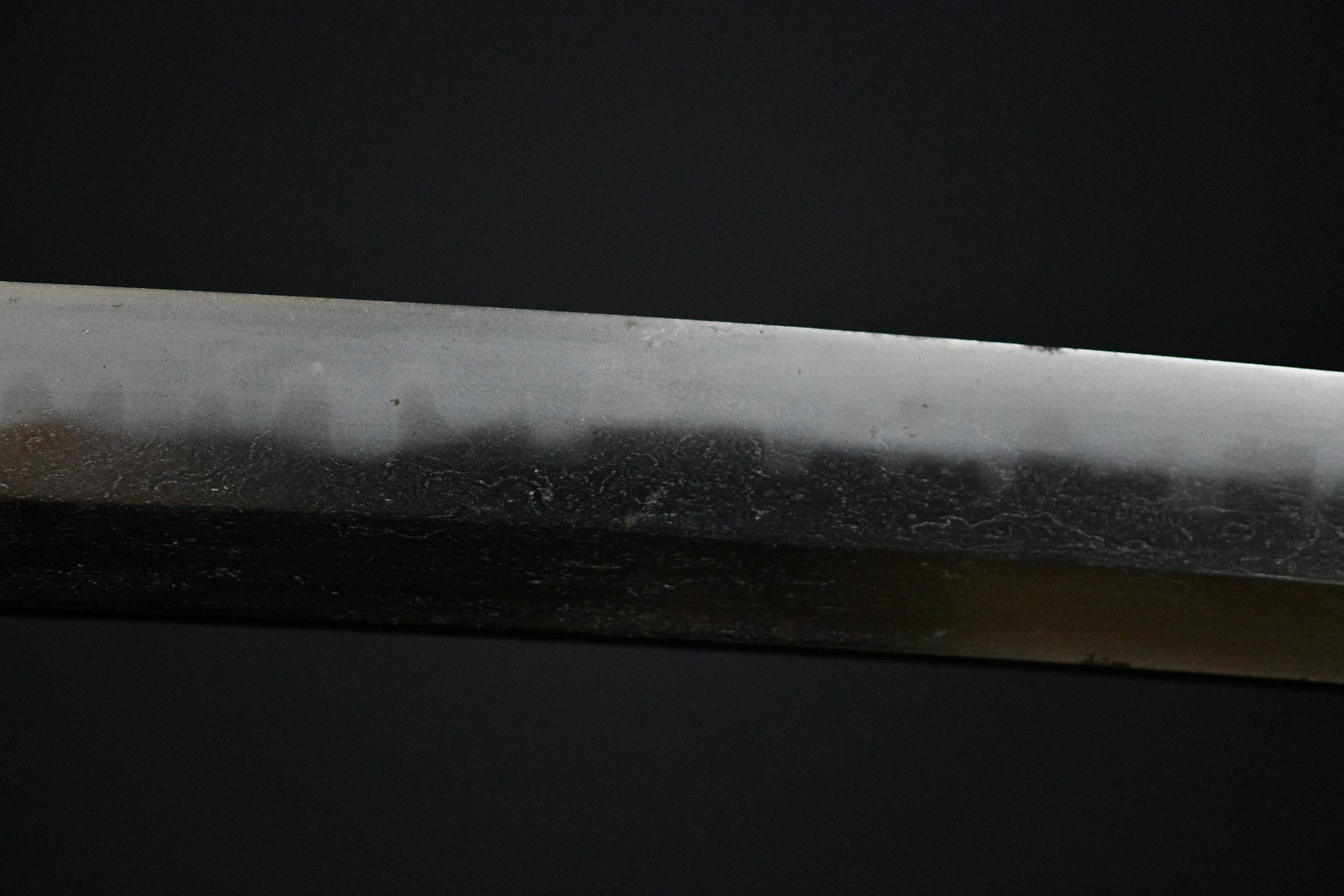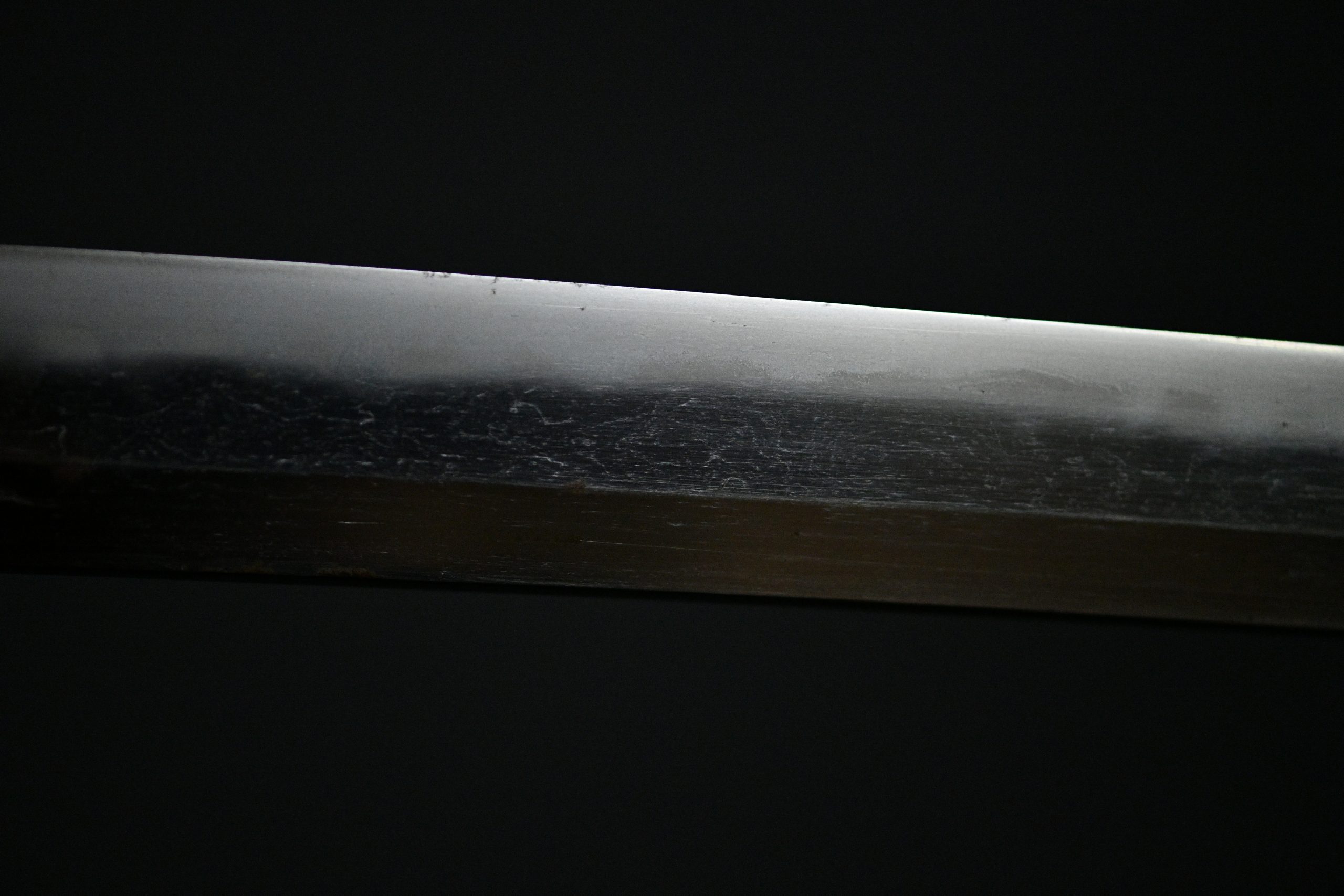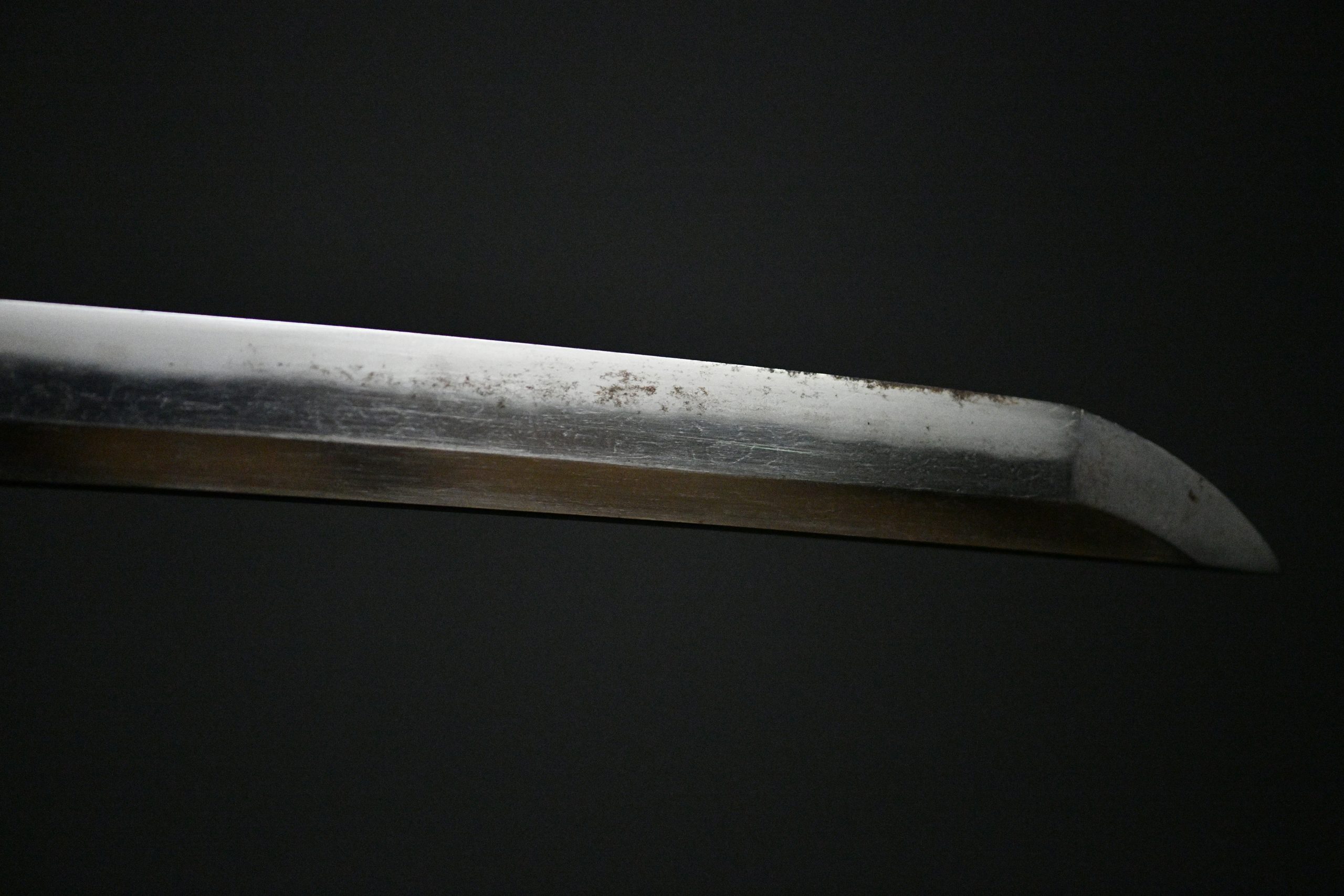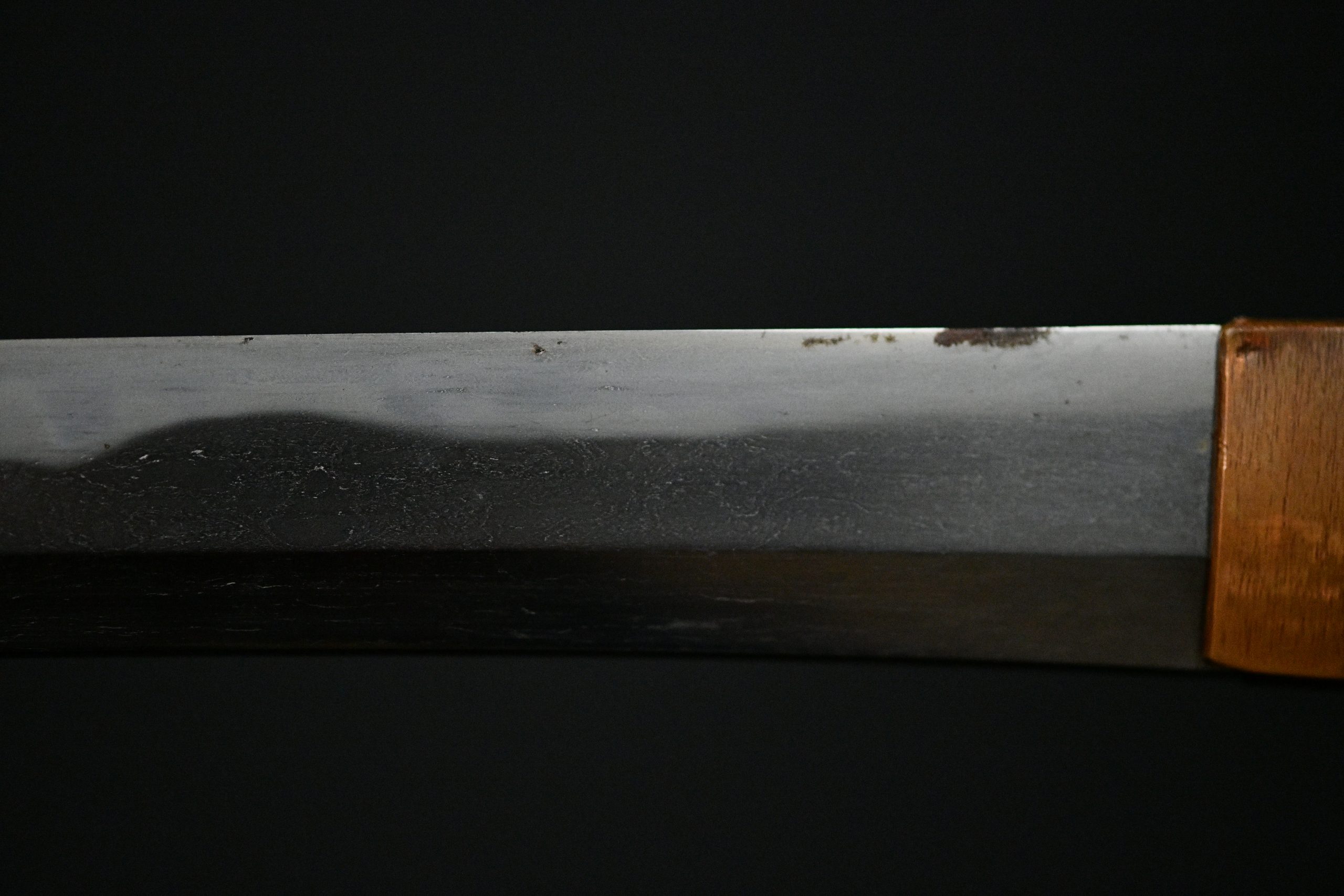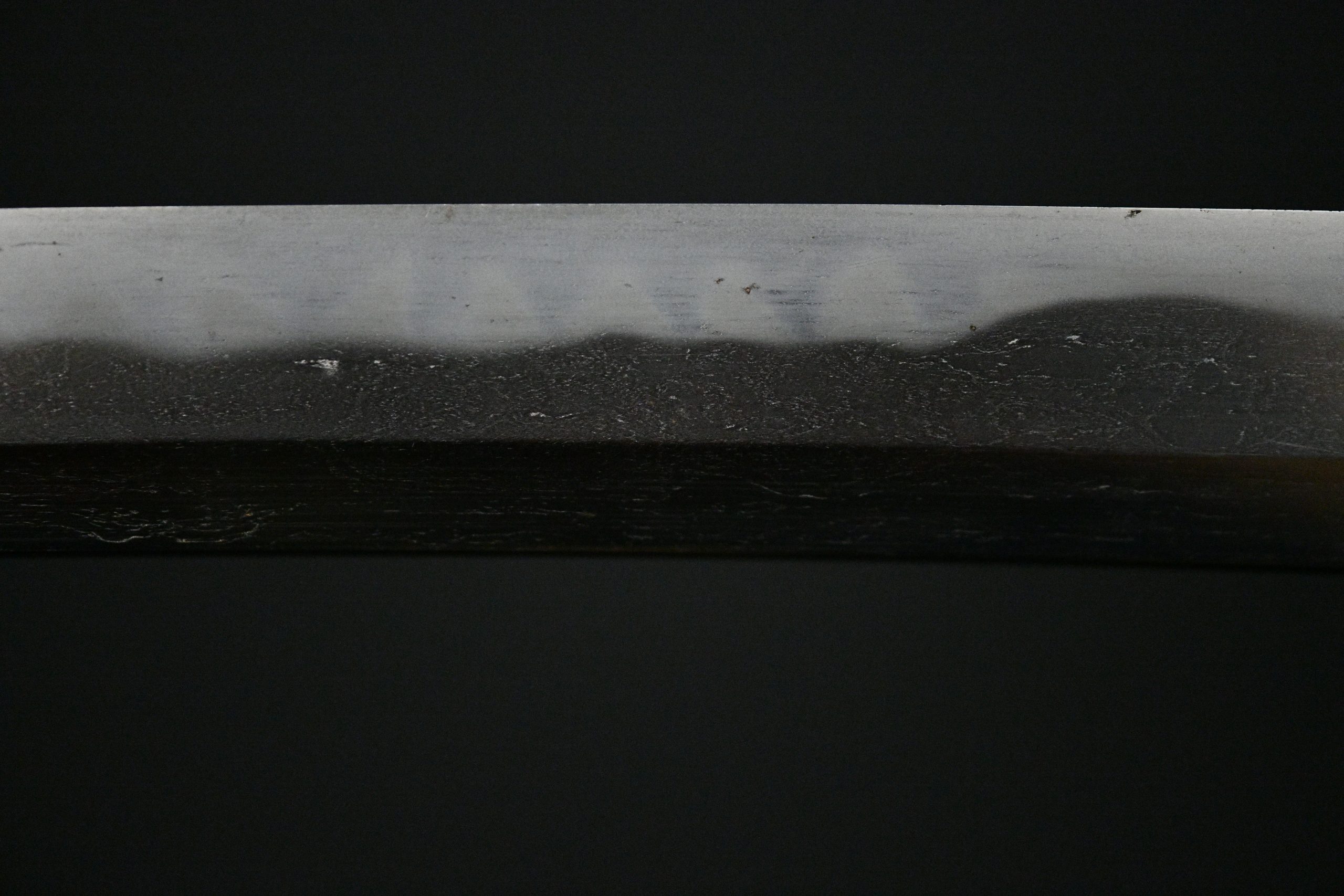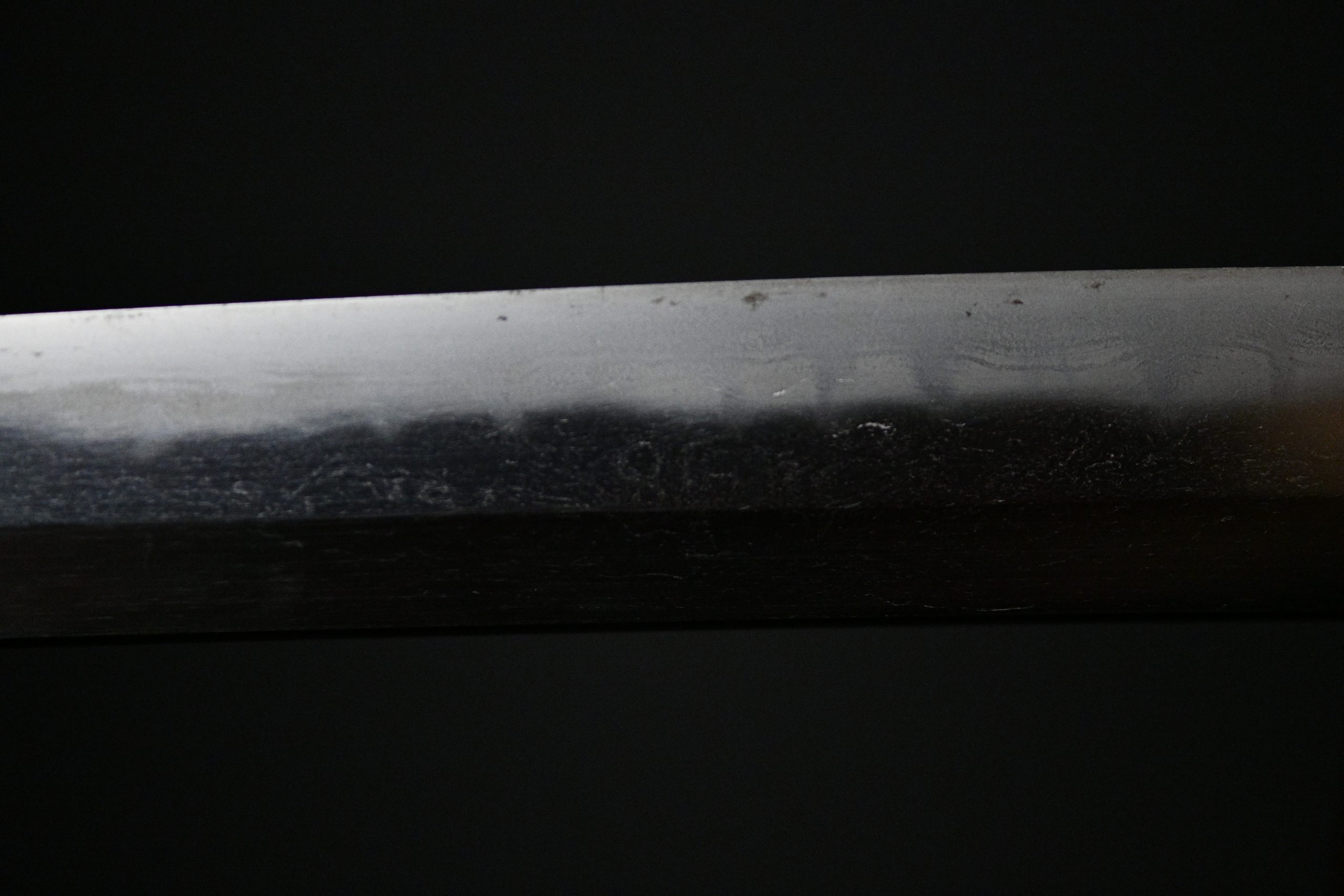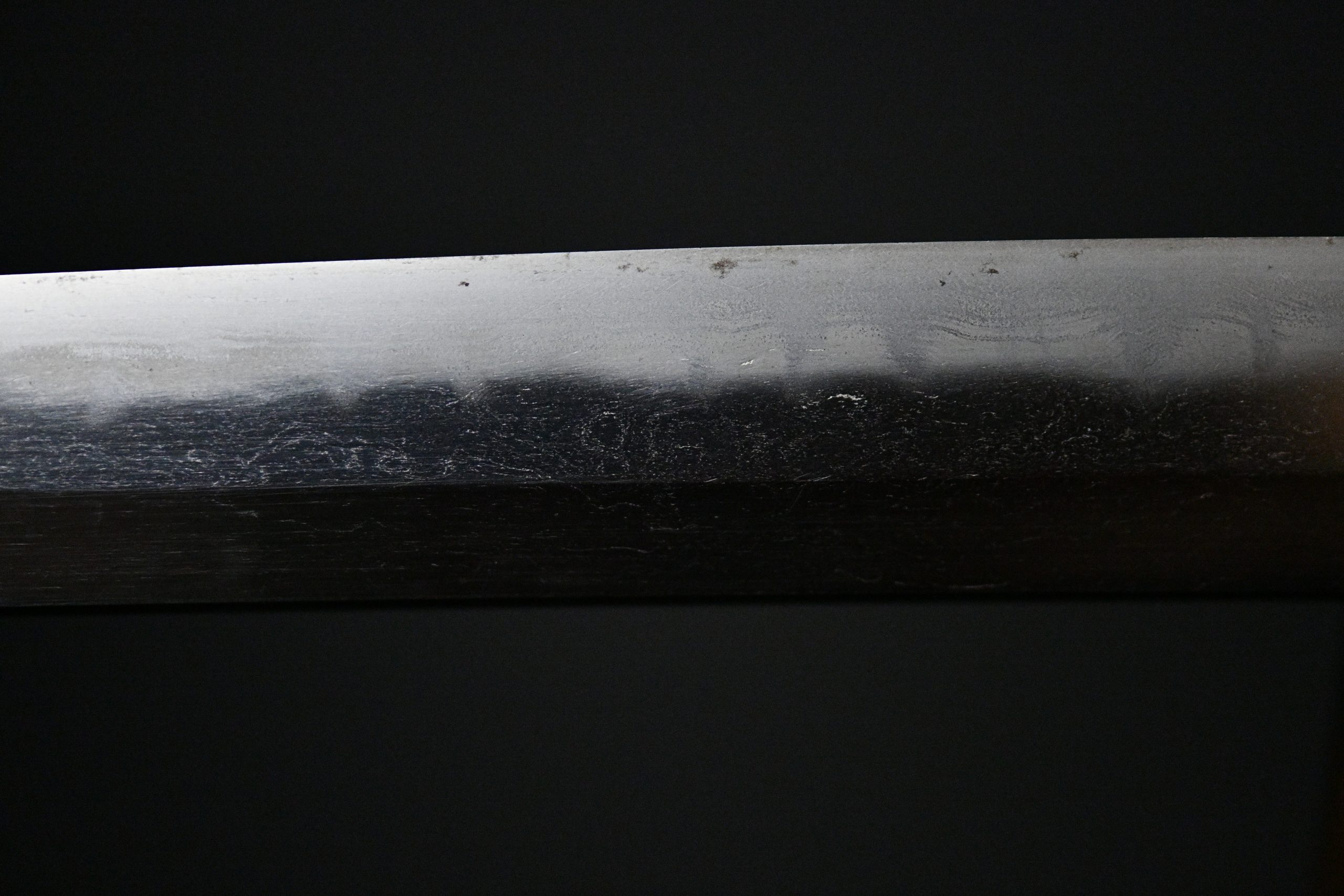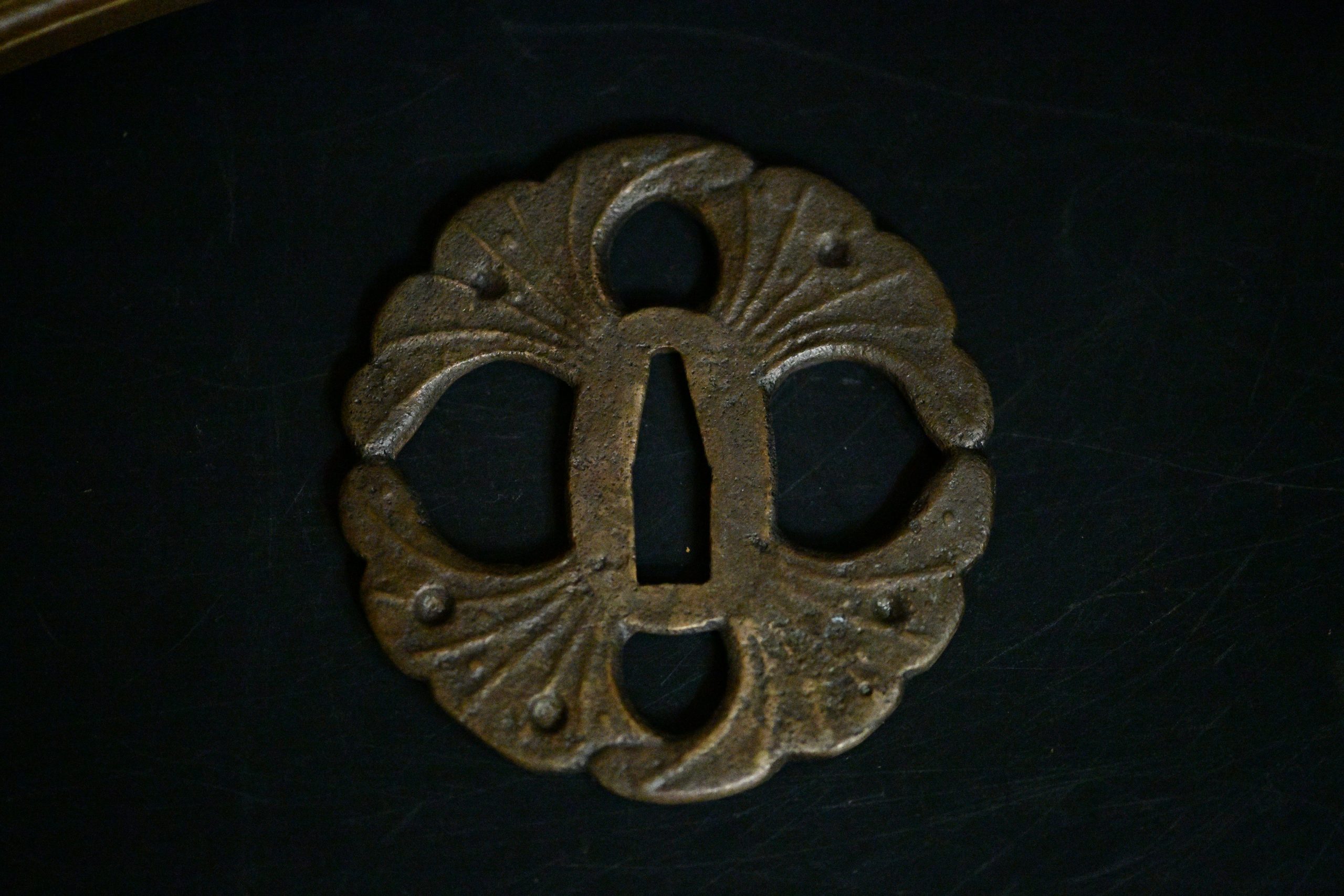Description
ITEM DESCRIPTION:
Comes with kimono or cotton bag. Comes with certificate of supein Nihonto.
Blade:
ence of traditional hand-forging. The kissaki shows some areas of oxidation near the boshi, yet the overall geometry of the blade remains intact. The tang (nakago) has three mekugi-ana, suggesting that the blade was remounted several times over its history, a common trait in long-serving samurai swords.
Mounting (Koshirae):
Tsuka: Black tsuka-ito wrapping over white samegawa rayskin. Menuki in gilded metal depicting floral motifs.
Fuchi-Kashira: Iron fittings richly decorated with flowers in relief, highlighted with gold inlay, displaying refined craftsmanship.
Tsuba: Iron guard in sukashi style, with a fan-like or vegetal design.
Saya: Dark brown lacquered scabbard, simple and elegant.
Habaki: Copper, plain but well-fitted.
Condition:
The blade retains a visible hamon and hada despite oxidation marks, particularly near the tip. The koshirae is well preserved, showing refined decorative elements that contrast with the sober saya.
Historical Narrative
This katana represents a fine example of an Edo period sword, mounted in a complete and elegant koshirae. The floral themes on the fuchi-kashira and menuki reflect the refined aesthetics of the samurai class, who regarded their weapons not only as tools of war but also as cultural and social symbols.
The presence of multiple mekugi-ana on the tang indicates that the sword was remounted and used across several generations, enhancing its historical value. Despite signs of use and oxidation on the kissaki, the blade still transmits the spirit of the master swordsmith who forged it.
Such a katana embodies both art and history: a functional weapon and a testimony of the samurai legacy.
Technical Sheet
Type: Katana
Period: Edo (attributed)
Blade length (nagasa): 52,2 cm
Curvature (sori): 1.6 cm
Hamon: Notare-midare (irregular wavy)
Hada: Itame hada visible
Kissaki: O-kissaki, with oxidation near the boshi
Nakago: Three mekugi-ana, remounted over time
Tsuba: Iron, sukashi style, vegetal/fan motif
Fuchi-Kashira: Iron with floral relief, gilded highlights
Menuki: Gilded floral motifs
Saya: Dark brown lacquered
Habaki: Plain copper
Blade is in good condition due to aging just superficial scratchings as normal. Not hagire and not fatal damage, of course. This is a japanese weapon so have a real historical value.
